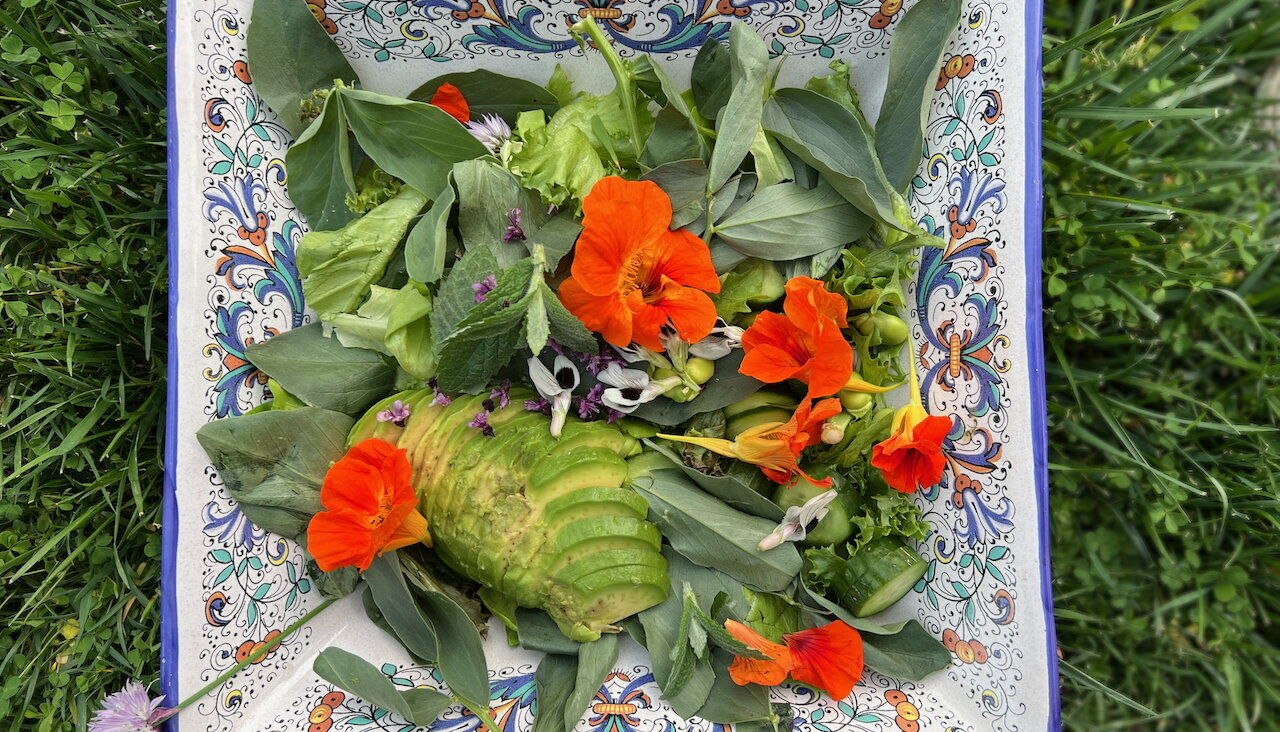A new cookbook will connect — and celebrate — Jews of Color

Graphic by Angelie Zaslavsky
As a kid growing up in Chicago, Alana Chandler, who is a Japanese-Jewish American, felt both invisible and all too noticeable.
“If you’re in a space with mostly Ashkenazi-looking people, Jews of Color tend to stand out,” Chandler explained. “We don’t look like what one thinks of as typically Jewish.”

Hanukkah donuts rolled in a sweet kinako soy bean powder and kuromitsu syrup from the upcoming Tlaim cookbook. By @chow.by.chandler
And though there are hundreds of thousands of Jews of Color in the United States, Chandler also felt like an anomaly.
“I thought my sister and I were the only ones,” said Chandler.
Today, Chandler has co-created a project to help others who may struggle with similar feelings: the first-of-its-kind cookbook by Jews of Color.
The new project is called “Tlaim: The Patchwork Cookbook.” Tlaim — it means patchwork in Hebrew — will feature recipes from Jews of Color, as well as stories, poems, essays and photographs.
“So much of Jewish tradition is rooted in food,” Chandler said. “Identity is tied with food, so by uplifting recipes from marginalized groups, that’s an act of food justice.”
Chandler, a senior at MIT studying materials science and engineering, is working on the cookbook with two other Jews of Color: Chinese Jewish Jess Cohen, who is studying physics at MIT, and Caribbean Jewish Léa Jean-François, a recent Barnard graduate who studied environmental science and biology.
The goal, said Chandler, is not to educate the Ashkenazi, but to celebrate the racial and ethnic diversity within the Jewish community and to connect Jews of Color to one another.
Tlaim grew out of a cookbook project Chandler started in high school while taking part in a Jewish United Fund-sponsored internship that looked at Judaism through a social-justice lens.
“We were talking about power and gender dynamics but also class privilege and disability, physical ability, and race,” Chandler said. “How do those things overlap in forming your self identity?”
The interns were invited to explore this concept through independent projects, so Chandler — an avid cook who in high school began a food-centric Instagram account, @chow.by.chandler, collected recipes and stories from six Jewish women of color and created a cookbook.

A Web image for the upcoming “Tlaim: The Patchwork Cookbook” Courtesy of @chow.by.chandler
I’d always thought of my racial identity as two separate things,” said Chandler, “being Jewish and being Japanese, they don’t intersect. Through the project I learned that there were so many JOCs.”
Chandler’s goal at the time was modest: She wanted to shed light on the existence of Jews of Color. But the resulting cookbook became the springboard for the more ambitious new project.
Funded with a grant from the Jews of Color Initiative, the book is being created in partnership with Be’chol Lashon (Hebrew for “in every language”), whose mission is to celebrate and promote the diversity of the Jewish people.
“I think that Alana represents a new generation of Jewish leaders who are boldly thinking about how to give expression to their Judaism and create community in new and innovative ways,” said Rabbi Ruth Abusch-Magder, director of education for Be’chol Lashon and a mentor for Chandler and the Tlaim team. “What I love about the Tlaim project is that it is speaking to the new ways Jews are connecting modern Jewish identity with their food.”

Vegan za’atar-roasted cauliflower korokke with tahini garlic sauce By @chow.by.chandler
“Wherever Jews have been, we haven’t had huge wealth to take with us from place to place,” Abusch-Magder continued, “but we’ve taken our recipes and they are a way of connecting us to where we have been and to our identity. So this legacy of the food that we bring, it’s really an important way where we give voice to our identity.”
Chandler said submissions for the cookbook are still needed, and recipes don’t have to be complicated or written out in standard recipe format.
“We don’t often see Jewish recipes that are beyond European or Ashkenazi food,” Chandler said. “To really be inclusive about what Jewish food looks like is the goal of this cookbook.”
Click here to read more about the project and to make a submission.






















